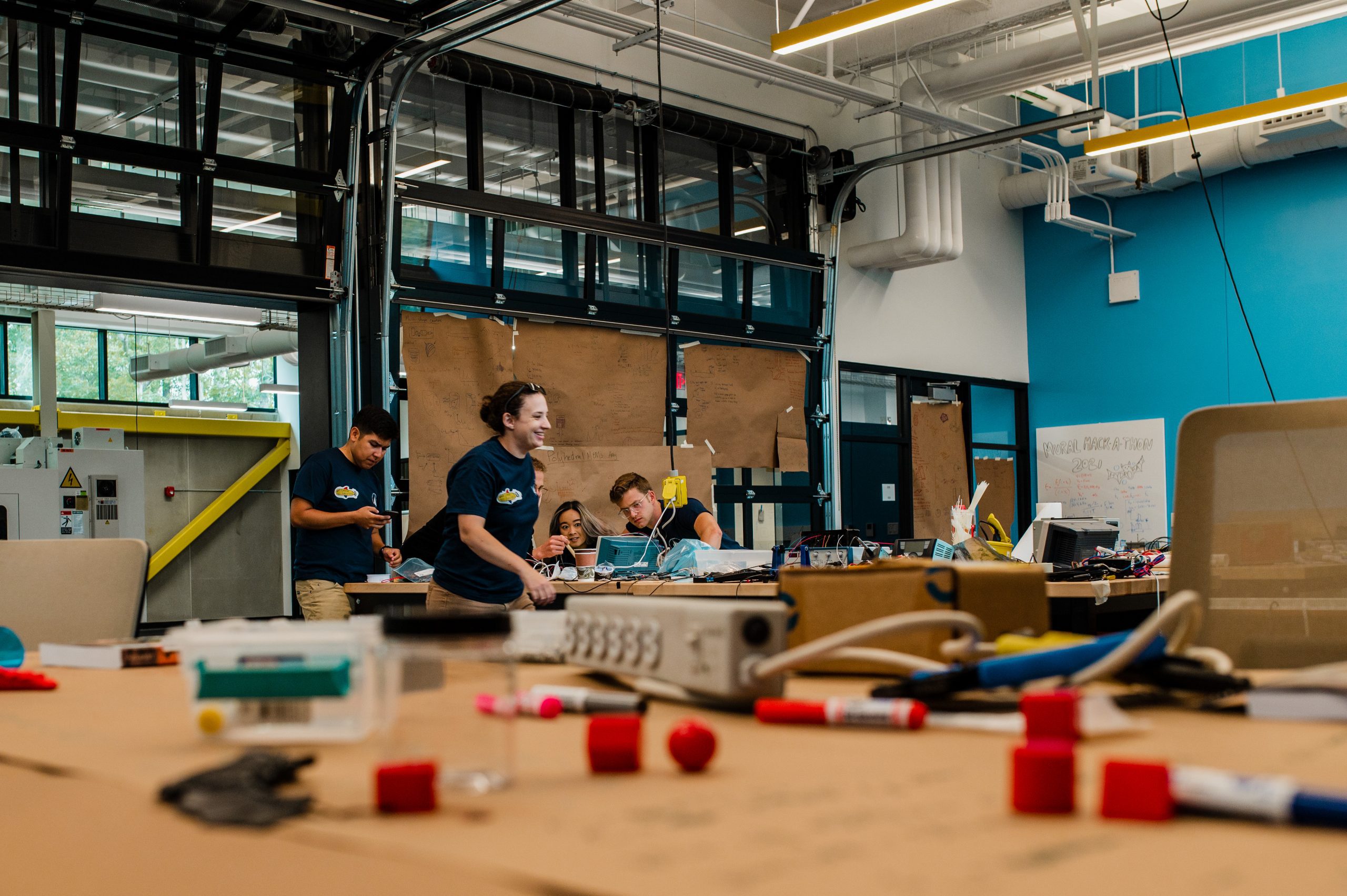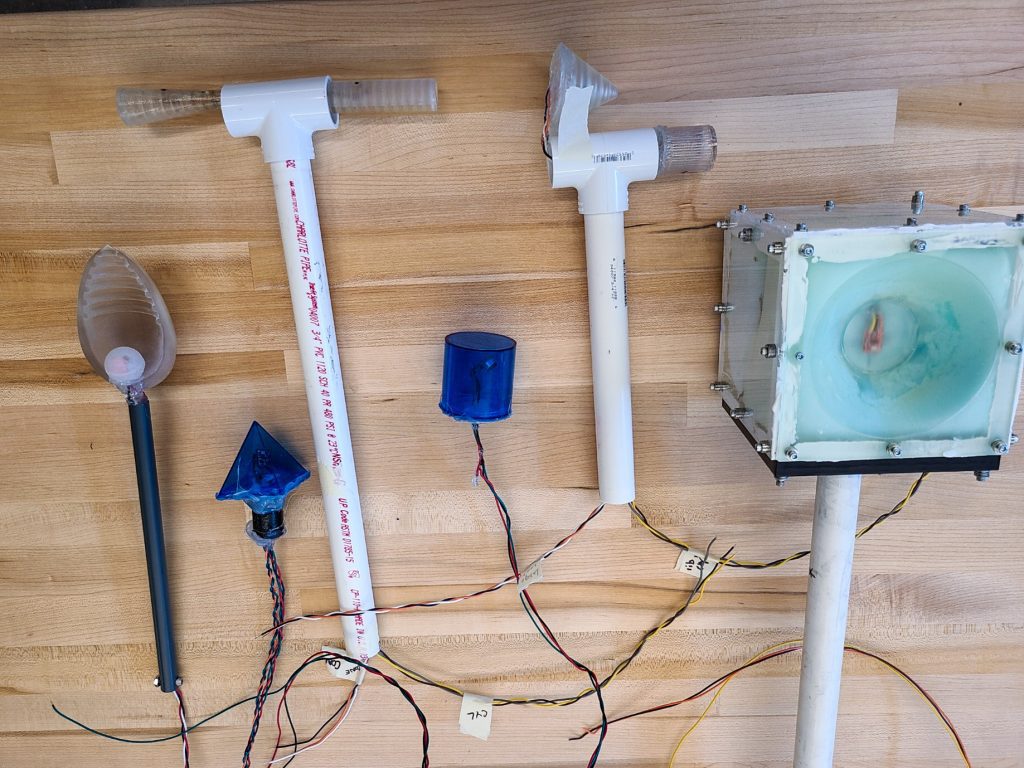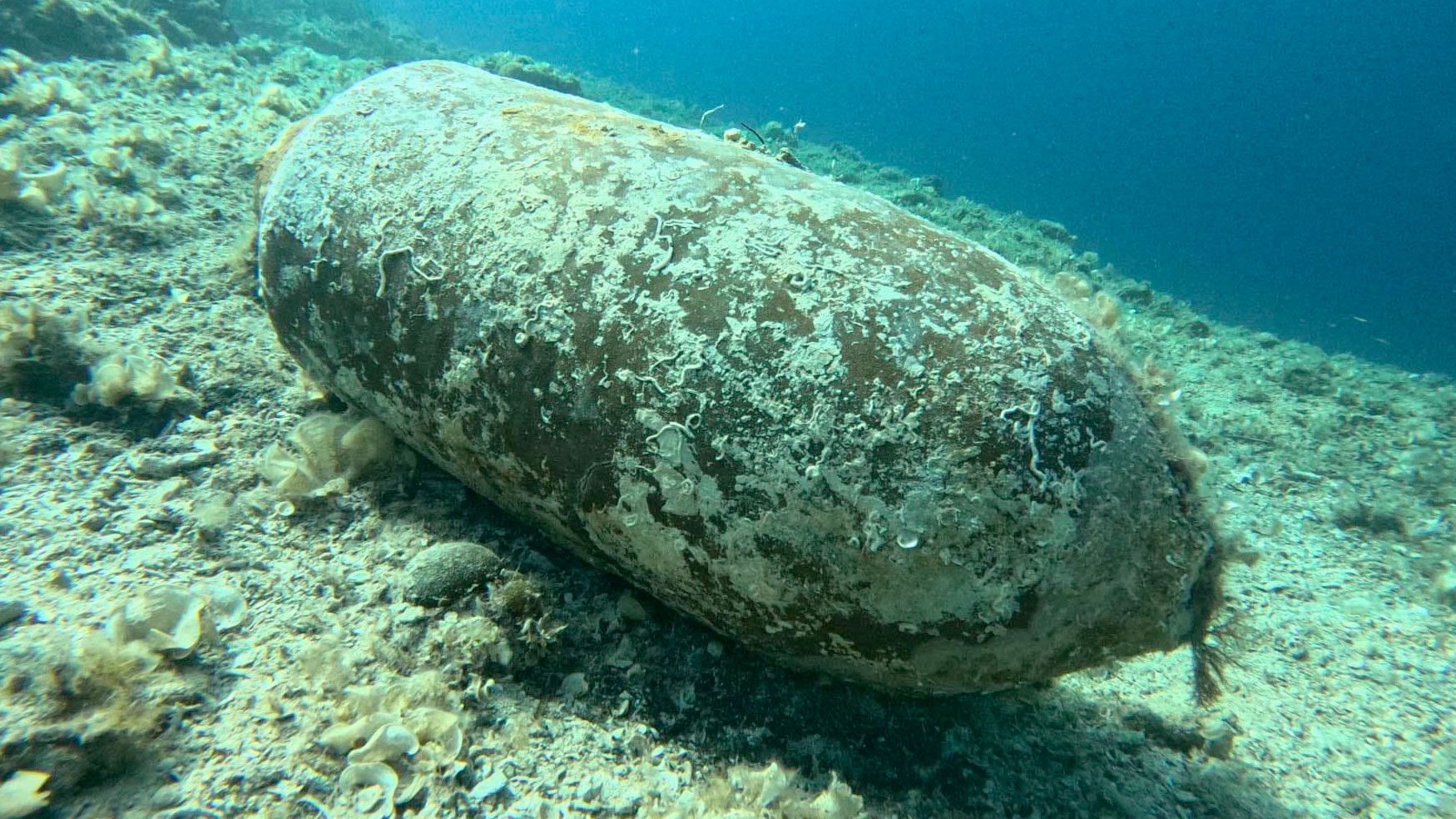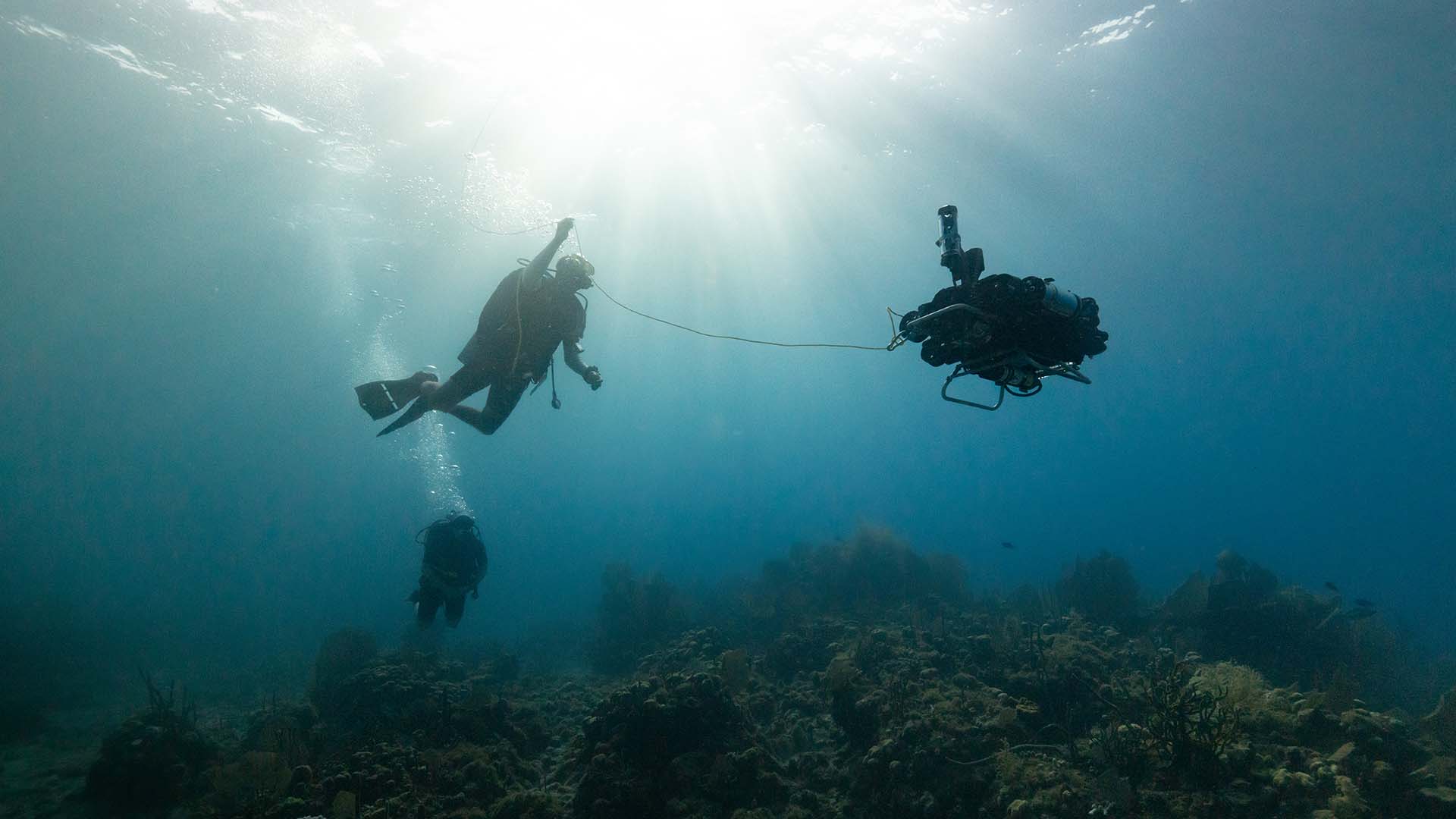
WHOI breaks in new research facility with MURAL Hack-A-Thon
Engineers use test tanks and 3D printers to prototype an acoustic sensor in the new Quissett Research Facility
Estimated reading time: 1 minute
The new Quissett Research Facility was heralded as a dedicated thinkspace for teams of engineers and scientists to test new designs for sensors and underwater robots at WHOI. In its first month the building delivered on that promise, hosting its first hardware hack-a-thon.
The event was led by members of WHOI's Marine Unmanned Robotics Acoustics Lab (MURAL) who gathered July 26-30, during the grand opening of the new building and its flagship program AVAST, or the Autonomous Vehicles and Sensor Technologies group. The cohort of eight, guided by WHOI scientist Dr. Erin Fischell, used the space to collaborate on a new aquatic sensor design inspired by the acute hearing mechanics of bat ears.

Some of the protoypes parts are arranged in the testing facility, including a 3D mold of a "bat ear" (far left) and an aquatic transducer (far right). (Photo courtesy of Erin Fischell, © Woods Hole Oceanographic Institution)
Where traditional hack-a-thons focus on brainstorming through software problems, MURAL took aim at improving the "hearing" capacity of swarming marine robots to make their synchronized movements and data-collection more precise.
"We've been knocking away at the various problems of swarming robotics and one of those is how do you do low-cost navigation and sensing," says Fischell. "The inspiration for the hack-a-thon was really this problem we need to solve to get large numbers of vehicles working together."
Using 3D-printed molds, small Arduino computer boards, and servo motors, the team developed six prototypes of the pivoting "bat ears." By the end of the event, the group, which included MIT-WHOI Joint Program students, had used the design to successfully home in on various sound sources emitted in a test tank.
"It went extraordinarily well," adds Fischell. "We ran longer than we intended, but it was great, we learned an awful lot."
After polling the institution for collaborative projects to test in the new facility, AVAST Director Sam Laney, says MURAL's brainstorm set high hopes for the space going forward.
"WHOI does have a strong culture of collaborative research, but that doesn't mean that all types of collaboration are easy to do[...] especially for projects that don't have existing templates," he says. "[The hack-a-thon] is a great example of how AVAST can help WHOI better leverage resources and opportunities."



